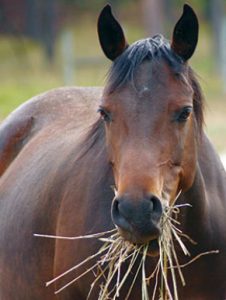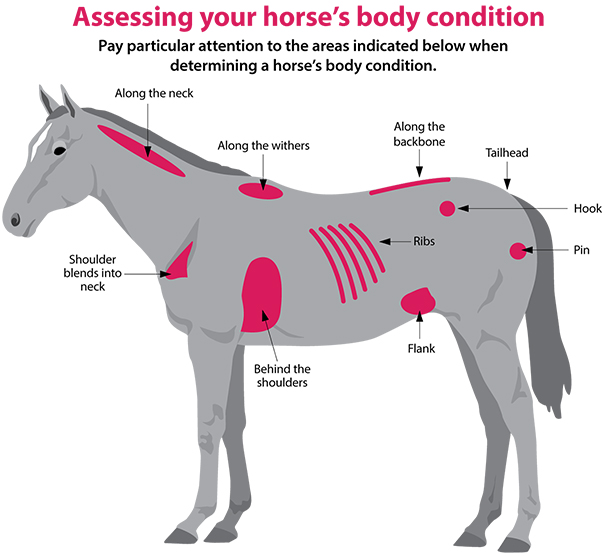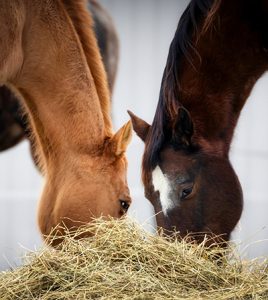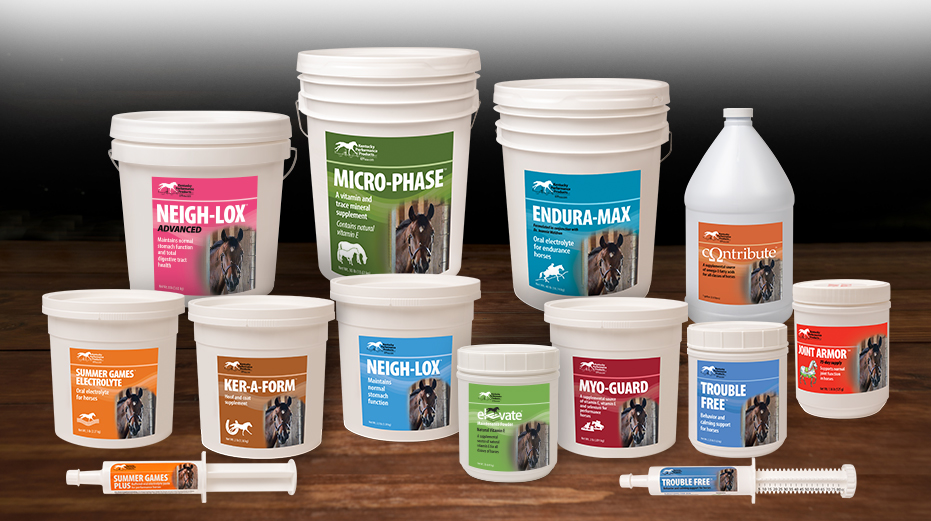
Adjusting Your Horse’s Diet for Seasonal Changes
As the seasons shift, a horse’s dietary needs also change. Whether you’re preparing a horse for the colder months or transitioning them back into spring, you can take several practical steps to manage your horse’s diet—and keep your horse healthy—during these seasonal turning points.
 Assess Your Horse’s Body Condition
Assess Your Horse’s Body Condition
Before making any dietary changes, start by evaluating your horse’s current body condition. Body condition score (BCS) is one way to generally gauge your horse’s fat coverage and overall health (you can also determine a horse’s weight more precisely by using a livestock scale or the formula method). Approaching the cooler months, for most horses you should aim for a BCS between 4 and 6. This range provides a buffer against weight loss during winter as your horse uses more energy to stay warm.
Horses with less body fat may need additional calories to maintain their condition as temperatures drop, while those with a higher BCS might require careful management to avoid obesity, particularly if their activity level decreases during winter.
Be Aware of Sugar Levels in Grass
Sugars in pasture grass can vary with season, temperature, and time of day. The sugar level in grass rises in the sun during photosynthesis, then falls overnight as the plant uses those stored sugars. Experts generally recommend that horses who are insulin-resistant (or “easy keepers” that might be at risk of obesity and laminitis) graze very early in the morning when sugar levels are lower. But during the transitional seasons of spring and fall, when daytime temperatures are warm but fall below 40°F at night, it’s prudent to limit early morning pasture grazing. That’s because chilly overnight temperatures can slow or stop grass from growing, leaving high levels of sugars in the plant’s leaves.
Evaluate Pasture Quality and Availability
As fall approaches, grass growth slows and nutrient levels drop, meaning your horse will be consuming less quality forage at pasture. If you rely heavily on pasture during the summer, start supplementing with high-quality hay as the grass dies back. Consider the type of hay you’re offering—alfalfa, for example, is more calorie-dense than grass hay and can be an excellent source of extra calories for horses who need to maintain or gain weight during the winter.
Even if your horse is on the heavier side, don’t reduce or stop their access to forage (in hay form) in an effort to lower the calories in their diet. Horses should consume between 1.5% to 2% of their body weight in forage daily. Instead, consider reducing high-energy grains or concentrates and providing a more mature, grass hay, which will have fewer calories than alfalfa or less mature grass hays, but still provide fiber.

Fall Diet Adjustments
Transitioning a horse’s diet from summer to fall often involves gradually introducing additional calories into their diet. As the weather cools, horses expend more energy to keep warm, and their dietary needs increase. This is particularly important for older or thinner horses.
Start by gradually increasing the amount of hay you offer, ensuring they have access to high-quality, free-choice forage at all times. (In spring, when pasture becomes more lush and your horse will have more access to fresh grass, you’ll need to gradually transition them again, from hay to pasture.)
For horses who need to maintain or gain weight, consider adding a fat source such as stabilized rice bran like Equi-Jewel® to their diet. This provides a concentrated energy and fiber source without high-starch feeds, which can exacerbate other metabolic issues.
Essential Supplements for Seasonal Changes
As natural forage from pasture declines, your horse will get less of the vitamins and minerals they normally consume from fresh grass. Supplementing with a balanced vitamin and mineral supplement can ensure they still receive essential nutrients like vitamin E, selenium, and zinc, which support immune function and overall health.
Horses on hay diets, in particular, may be at risk of vitamin E deficiency, as hay loses this nutrient quickly after being cut. Adding a vitamin and mineral supplement like Micro-Phase® to your horse’s diet can contribute to the balanced nutrition they need. Micro-Phase provides natural vitamin E, which is up to three times more potent than synthetic vitamin E commonly found in other supplements, and its balance of vitamins and trace minerals fills in dietary gaps during seasons when your horse isn’t able to graze on good pasture.
Probiotics and prebiotics are also useful, especially when changing feeds or forage, because they support gut health and reduce the risk of gastric ulcers and other digestive issues. If your horse has a sensitive digestive system or is prone to ulcers, the gastric buffer Neigh-Lox® or Neigh-Lox® ADVANCED can help smooth your horse’s transition from one seasonal diet to another.
Omega-3 fatty acids like those found in Contribute™ are beneficial for maintaining healthy skin and a shiny coat, which can become dry and dull in cold weather.
Feeding Practices for Optimal Health
Sudden changes in a horse’s diet can cause digestive upset or colic, so it’s important not to change your feeding program too quickly. Introduce new feeds or supplements slowly over 7-10 days to allow your horse’s digestive system to adapt.
Horses’ natural feeding behavior is to graze for most of the day, and providing access to forage throughout the day echoes that pattern. This not only supports healthy digestion, but also helps your horse maintain their body temperature during cold weather. Always try to feed your horse at the same times each day, which will help prevent issues like colic.
And make sure they always have access to fresh water—good hydration is just as important in the winter as in the summer and helps prevent impaction colic. Some horses actually drink less in winter when water is colder and freezing temperatures can create ice in troughs and water buckets. So regularly clear ice out of water sources, and if your horse’s water intake decreases, your veterinarian might suggest adding a dose of electrolytes to the feed to stimulate the thirst response. In summer, when your horse is working in higher temperatures, an electrolyte like Summer Games® Electrolyte also replenishes the electrolytes and trace minerals they lose through sweating.
Monitoring and Adjusting Based on Individual Needs
Your horse’s dietary needs in each season will vary based on such factors as age, breed, seasonal workload, and health status. So it’s important to assess their situation and monitor their body condition regularly, fine-tuning your feeding practices according to their needs at any given time. Also pay attention to changes in your horse’s coat, hooves, and overall behavior, as these can tip you off to nutritional imbalances. Staying attuned to your horse’s individual needs will allow you to make informed decisions and ensure they remain healthy and well-nourished throughout the year.

Have a question about supplements that can help your horse during the transition to fall and winter? Get in touch! Call us at 859-873-2974 or 800-772-1988 or email info@kppusa.com.


